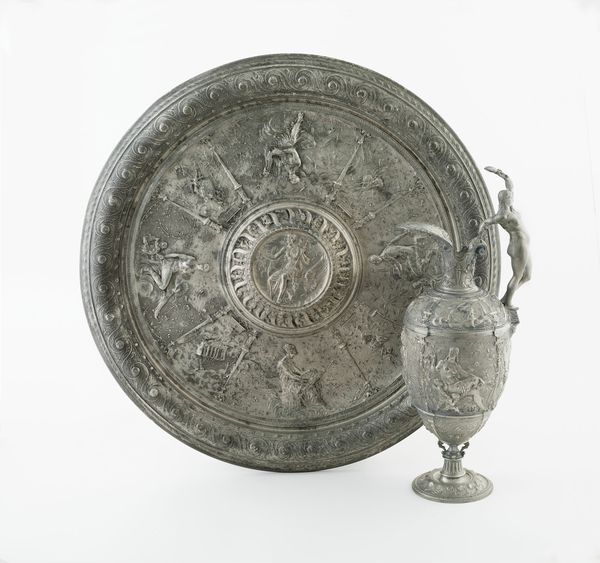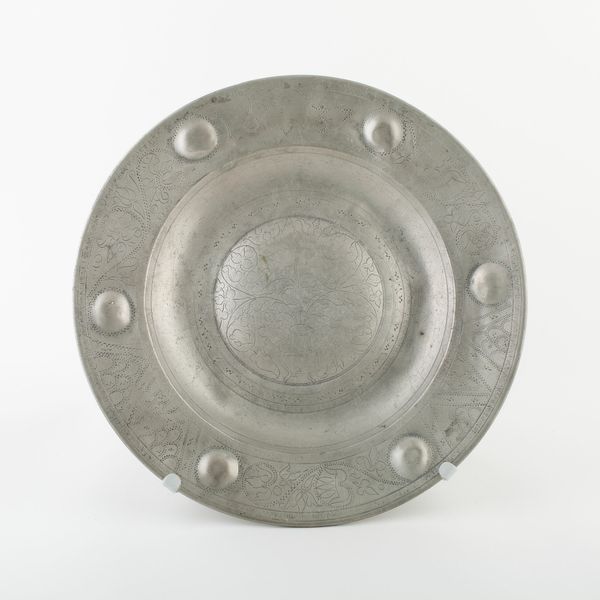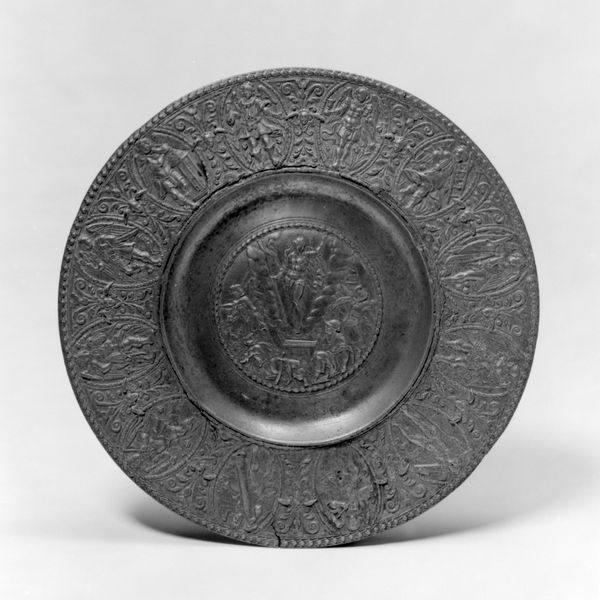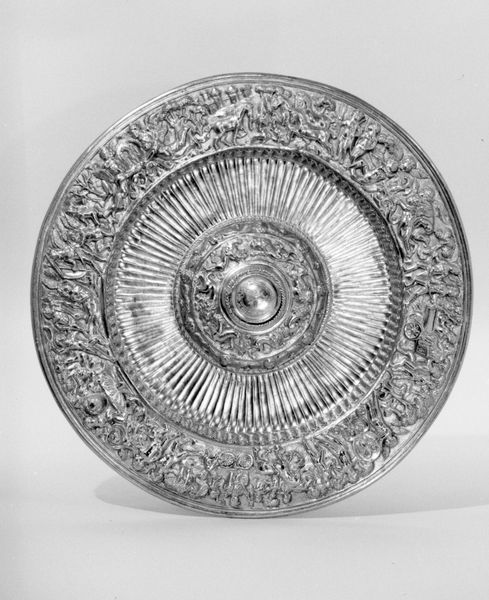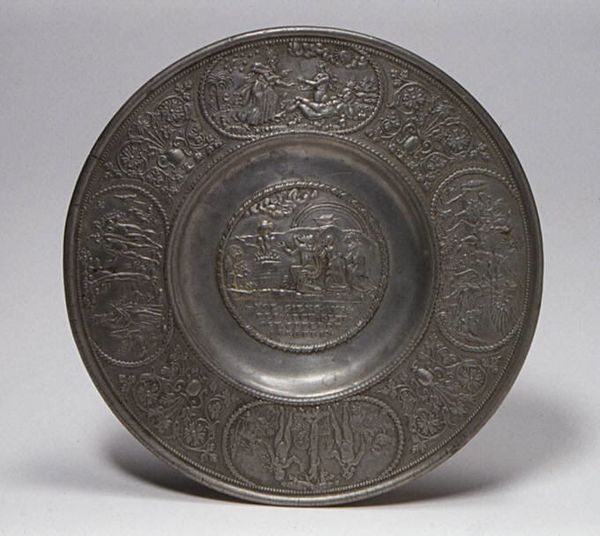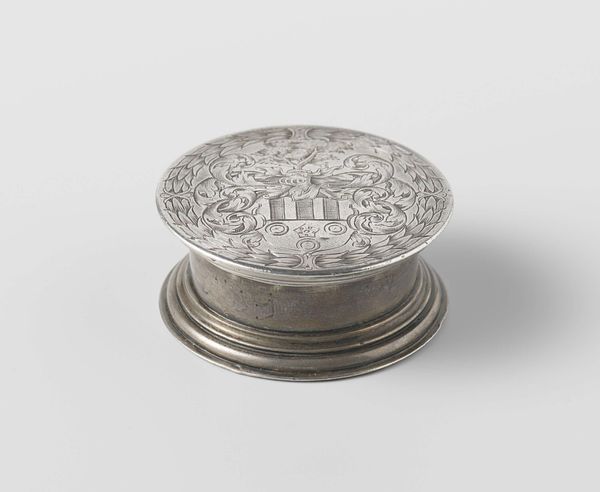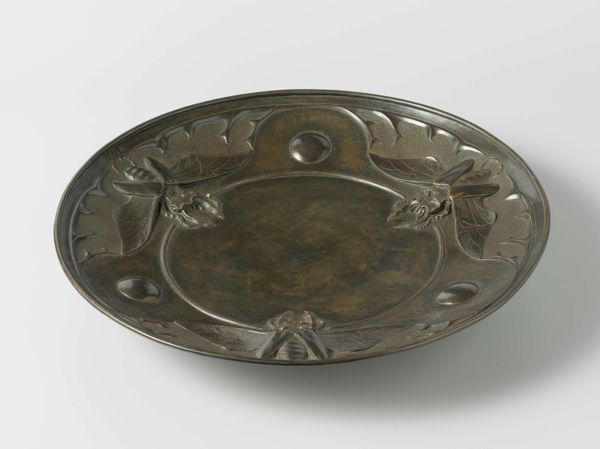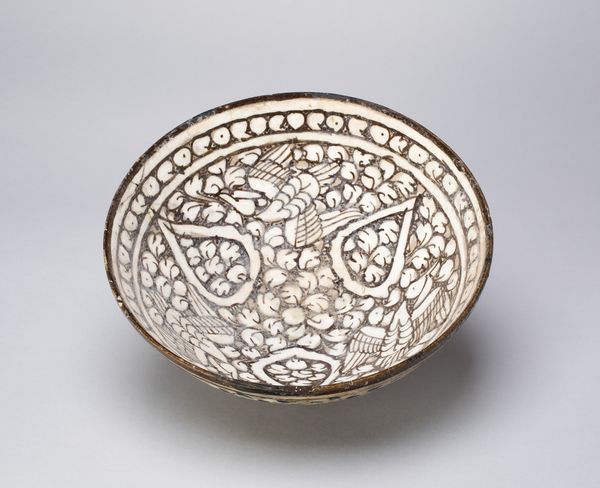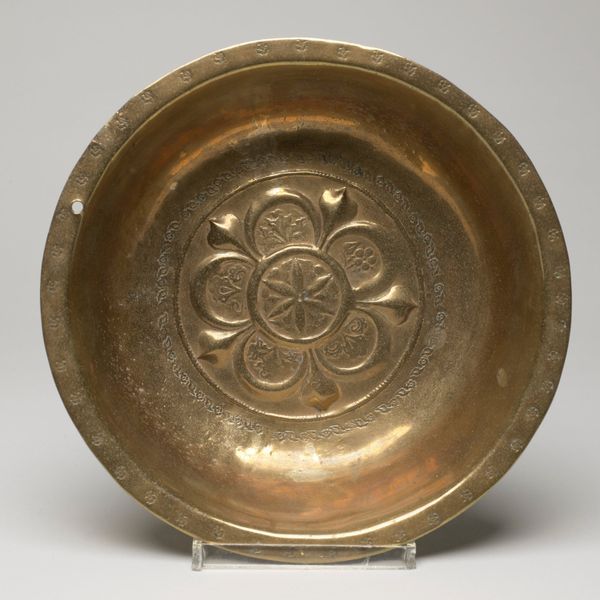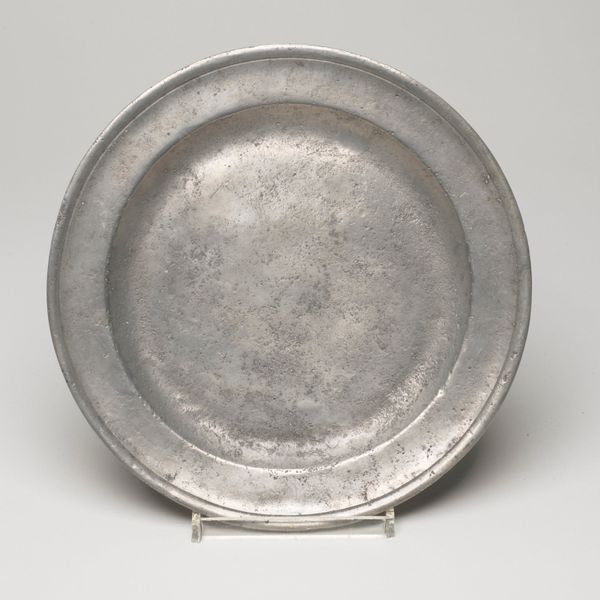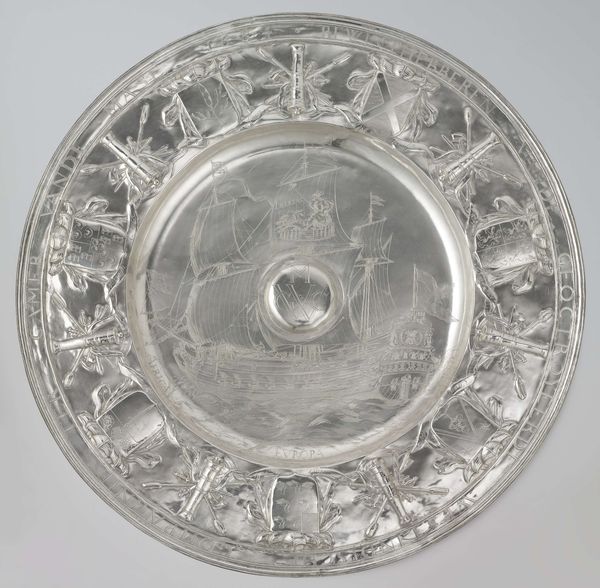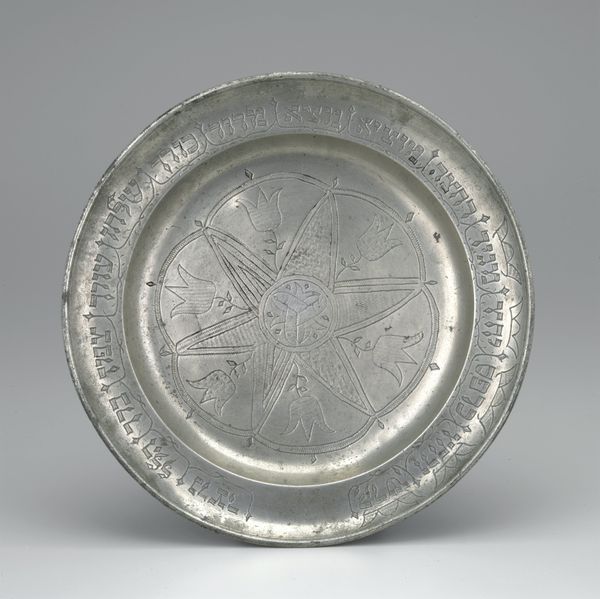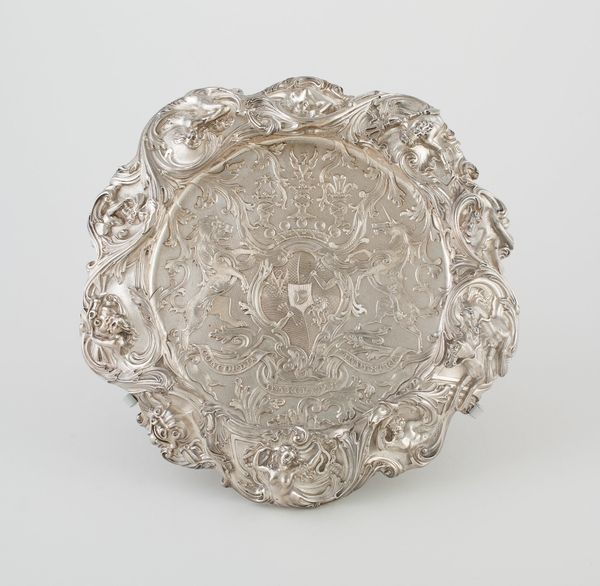
metal, relief, ceramic
#
metal
#
relief
#
ceramic
#
sculptural image
#
11_renaissance
#
vessel
#
stoneware
#
ceramic
#
history-painting
#
decorative-art
Dimensions: 0.8 × 19.7 cm (1/3 × 7 3/4 in.)
Copyright: Public Domain
Curator: This is a plate by Paulus Öham, crafted around 1660. Notice the use of relief in its metal and ceramic construction, a stunning example of decorative art now housed at The Art Institute of Chicago. Editor: The plate has a weighty, almost somber presence, doesn't it? The cool metal and the detailed reliefs create a sense of depth, pulling you in. Curator: Absolutely. And the historical context here is key. Plates like this weren't mere tableware; they served as vehicles for storytelling, reflecting the socio-political climate and prevalent narratives of the time. This one depicts scenes reminiscent of classical history painting. It asks questions about whose stories are valorized. Editor: From a purely formal perspective, the composition is captivating. The central image is framed by these smaller vignettes along the rim; all organized to lead the eye in a circular dance around the plate. What about the techniques employed, the actual methods? Curator: Well, let’s consider that a piece like this may function ideologically by glorifying a select history. Understanding the processes—who made it, under what conditions, for whom— illuminates its function as both object and messenger. Editor: The sculptural images that wrap around the plate almost resemble stations on a wheel; or an evolving cyclical history. Curator: Precisely. This type of work challenges us to consider how notions of power, status, and historical memory were materially embedded in everyday objects, reflecting broader societal structures and biases. This plate then opens dialogues on craft, labor, and the very narratives we choose to preserve. Editor: Looking at it, I'm struck by the contrasting scales of detail. Each figure seems intentionally rendered, almost yearning to communicate beyond their circular boundaries. Curator: It's a piece that invites us to rethink the relationships between art, history, and identity, particularly within the context of decorative arts. Editor: It really prompts us to see beyond mere surface aesthetics, engaging with deeper formal and conceptual layers. Thank you.
Comments
No comments
Be the first to comment and join the conversation on the ultimate creative platform.
